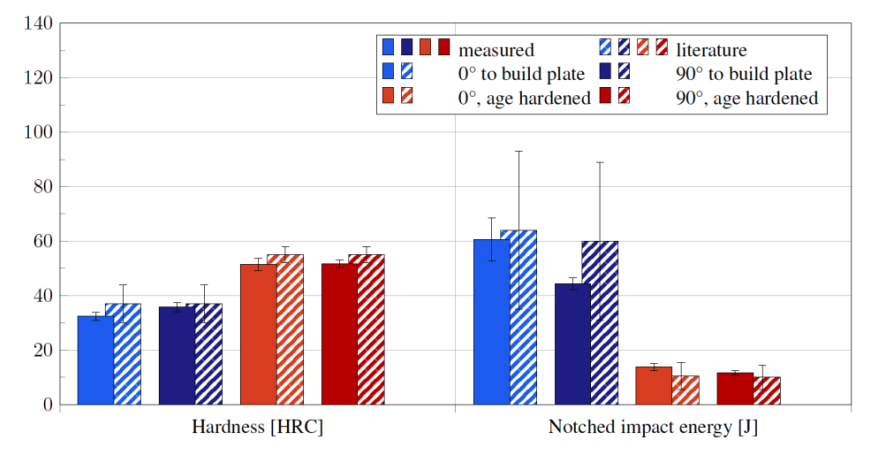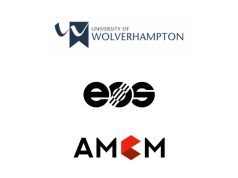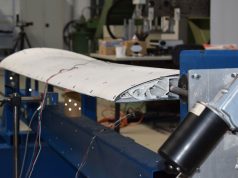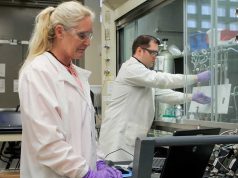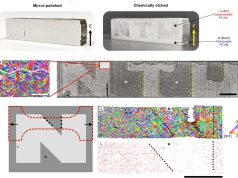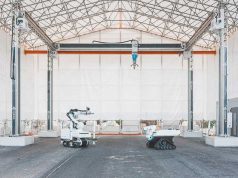The additive-subtractive manufacturing process chain (ASM) is crucial in the production of additively manufactured components, as different pre- and post-treatment processes can significantly influence the properties of the components. Within the framework of the intercompany cooperation project “Ad-Proc-Add” of the ecoplus Mechatronics Cluster, scientists from GFE – Gesellschaft für Fertigungstechnik und Entwicklung Schmalkalden e.V. have investigated the correlations between process parameters and component properties in SLM-manufactured parts and developed optimized process parameters.
Pre- and post-treatment procedures, such as heat treatment processes after additive manufacturing, removal of support structures, subtractive processes to improve surface functionality, and finishing procedures to achieve defined surface properties, play a crucial role for the final functionality of the components. The careful coordination of these processes can significantly influence the component properties. Especially in workpieces made of Maraging steel 1.2709, which is often used in additive manufacturing by SLM (Selective Laser Melting), the properties largely depend on process control, heat treatment, and final machining. Heat treatment and post-processing processes lead to significant changes in the properties of workpieces and materials, such as residual stresses and strength.
As part of the international “Ad-Proc-Add” project, the research team led by Dr. Heiko Frank from GFE – Gesellschaft für Fertigungstechnik und Entwicklung Schmalkalden e.V. examined individual process steps of additive manufacturing, pre-treatment, functionalization, and finishing on various materials. The analyses of different heat treatments of additively manufactured workpieces made of martensitic steel 1.2709 confirmed the necessity of a heat treatment for optimal workpiece properties. Furthermore, it was found that heat treatment not only influences hardness and toughness but also the properties of a subsequent coating.
PVD coating instead of heat treatment
The mechanical properties of martensitic steel 1.2709 are influenced by both the build direction and heat treatment. Workpieces with a build direction of 0° to the build plate have a higher notch toughness (notch parallel to the layer) than those with a build direction of 90°. After heat treatment, the hardness increases from 32-36 HRC to 51-52 HRC, while the notch toughness decreases from 44-60 J to 12-14 J, without the build direction having a significant influence on these properties.
By replacing the usual heat treatment for material 1.2709 with a PVD coating (Physical Vapor Deposition), a comparable hardness can be achieved, with a deposition temperature of about 480 °C being necessary. The combination of heat treatment and coating deposition not only enables similar microstructures to be set, but also improves the wear resistance of the coated workpieces. These properties allow use in application areas comparable to those of conventionally produced components.
Research in this area has the potential to further optimize the additive-subtractive process chain and thus improve the quality and functionality of additively manufactured components. The team has published the results as an open-access publication, which is accessible here.
The project’s final report can be obtained through the Forschungskuratorium Maschinenbau (FKM) e. V.. Postal address: Lyoner Str. 18, 60528 Frankfurt am Main, Germany, Email: info@fkm-net.de, Phone: +49 69 6603 1352.
Further information is also available on the project website: www.ad-proc-add.eu
Subscribe to our Newsletter
3DPResso is a weekly newsletter that links to the most exciting global stories from the 3D printing and additive manufacturing industry.



